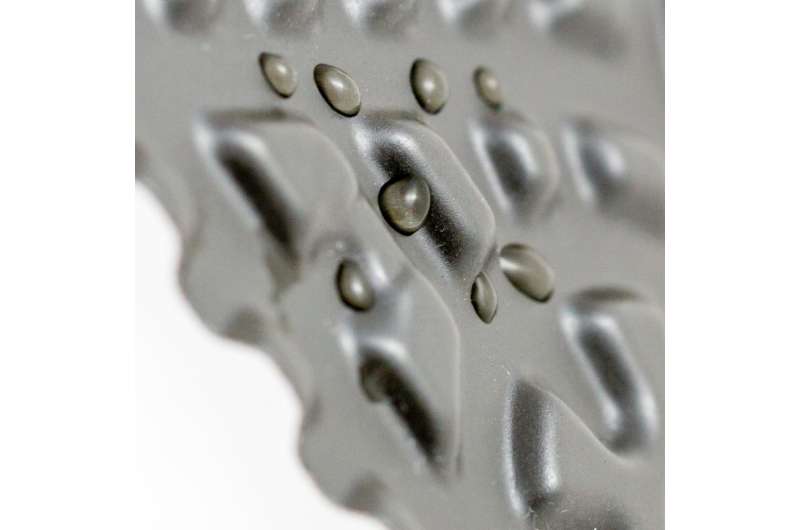New nano-coatings have an anti-adhesive, anti-corrosive and antimicrobial effect. Credit: Ollmann
When processing milk and juice, the food industry uses heat exchangers in numerous steps throughout the process. To protect consumers, heat exchangers have to be free from microbes. In the numerous grooves and recesses of the heat exchanger, persistent biofilms can remain stuck. As a result, heat exchangers must be cleaned at regular intervals using aggressive chemicals. These increase the sensitivity for corrosion, especially if mild steel is used as heat exchanger material. Now the INM – Leibniz Institute for New Materials is introducing new nano-coatings that reduce the effort required for cleaning heat exchangers and preventing corrosion. In these new coatings, the research scientists combine antiadhesive, anticorrosive and antimicrobial properties.
The developers will be demonstrating their results and the possibilities they offer at stand B46 in hall 2 at this year's Hannover Messe which takes place from 24th to 28th April.
The developers achieved the anti-adhesive characteristics by introducing hydrophobic compounds that are similar to common Teflon. These inhibit the formation of any undesired biofilm and allow residues to be transported out more easily before they clog up the channels of the heat exchangers. At the same time, the researcher used structures that act as a diffusion barrier in the coatings. These inhibit corrosion provoked from substances or aggressive cleaning agents. To prevent microbes, bacteria or fungi from adhering to surfaces, the scientists additionally use colloidal copper in the coating. Due to the oxygen or water that is present in many processes, copper ions are released from the copper colloids. These migrate to the surface and, as a result of their antimicrobial effect, prevent microbes from proliferation and growth.
"In addition, we can keep the paint chemically stable. Otherwise, it would not withstand the aggressive chemicals that are required for cleaning," explained Carsten Becker-Willinger, head of nanomers at INM. Adding that the paint could also be adapted for special mechanical loads, he explained that this was important for paint used in heat exchangers, too. Due to mechanical vibrations, the individual plates of the heat exchangers could be subjected to a certain amount of abrasion at points of contact.
The paint could also be used in other contexts, Becker-Willinger said, including in air conditioning with heat exchangers. Furthermore, the paint could be used for equipment in water purification plants, for example.
The paint can be applied using standard methods such as spraying or immersion and subsequent hardening. It can be used on stainless steel, steel, titanium or aluminum. By selectively adapting individual constituents, the developers are able to respond to the particular, special requirements of interested users.
Provided by Leibniz Institute for New Materials























